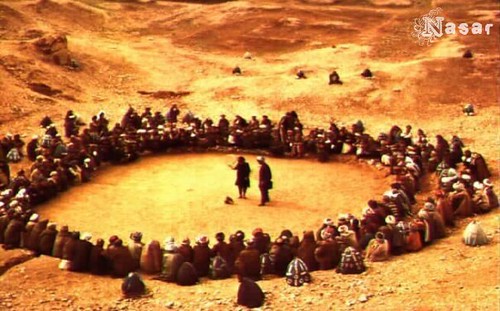M WAQAR..... "A man's ethical behavior should be based effectually on sympathy, education, and social ties; no religious basis is necessary.Man would indeed be in a poor way if he had to be restrained by fear of punishment and hope of reward after death." --Albert Einstein !!! NEWS,ARTICLES,EDITORIALS,MUSIC... Ze chi pe mayeen yum da agha pukhtunistan de.....(Liberal,Progressive,Secular World.)''Secularism is not against religion; it is the message of humanity.'' تل ده وی پثتونستآن
Thursday, November 7, 2013
Afghanistan: The Role of the Jirga
http://www.tolonews.com/
The Jirga has played an important role in Afghan history as a traditional style of community decision-making used for issues both small and large. Today, the practice, in varying forms, continues to have a central influence on politics and governance in Afghanistan.
A Jirga in its original sense is a gathering of tribal elders, but in the modern context, Jirgas are often composed of government officials. In fact, the persistence of the Jirga practice in Afghanistan is one of the most obvious cases in which tribal traditions have fused into the country's modern state governing system.
Although the two chambers of the Afghan National Assembly in Kabul often go by the English titles of Upper House and Lower House, or Senate and House of Representatives, they also retain the names Meshrano Jirga – elders' Jirga – and Wolesi Jirga – people's Jirga.
The Loya Jirga, expected to convene this week to determine the fate of the Kabul-Washington Bilateral Security Agreement (BSA), is the biggest of the gatherings in today's Afghanistan, reserved for particularly salient national issues.
But these are forms of formal, centrally authorized Jirgas, organized under auspices of the Constitution. There remain today small-scale and independent Jirgas regularly convened on the provincial, district and village level throughout the country, and without the imprimatur of officials in Kabul.
The history of Jirgas in Afghanistan is long, garnering the country the nickname "the land of jirgas." The practice has rarely been seen outside of Afghanistan and certain Pashtun-dominated areas of western Pakistan.
Ahamad Shah Abdali was crowned the King of Afghanistan by a Jirga. During the reign of Amanullah Khan a Loya Jirga was held for approval of his constitution, and several Jirgas were held during Mohammad Zahir's time and later during the governments of Sardar Mohammad Dawoud Khan and Dr. Najibullah.
The current government in Kabul was itself forged through Jirgas. The transitional government following the U.S.-led invasion that toppled the Taliban regime as well as the current Afghan Constitution were both put in place by Loya Jirgas.
Some have criticized President Hamid Karzai's decision to leave the BSA, which will detail the U.S.' troop presence after the NATO withdraw in 2014, up to the thousands of leaders that will gather for the Loya Jirga this week. But many of the concerns about the President using the event as guise to pursue his own interests would not be anything new to the practice of Jirgas if valid.
"In most of the Jirgas, rulers strived to impose their own plans and objectives on the people, the fact is they misused the Jirgas," political analyst Mohammad Amin Farhang said about the history of Jirgas in Afghanistan.
Although many social scientists say the Jirga is past its day as more formal structures of governance on local and national levels have been established, the continued use of the term and the practice itself perhaps indicate Afghans are not ready to give up the role of the Jirga in their society.
In the long-term, as Afghanistan continues to modernize, the place of the Jirga within the country's democracy and vision of progress is uncertain.
However, with 2,500 leaders from around the country converging on the capital this week for the BSA Loya Jirga, the gathering will undoubtedly have an impact on Afghan affairs in the near term.

No comments:
Post a Comment